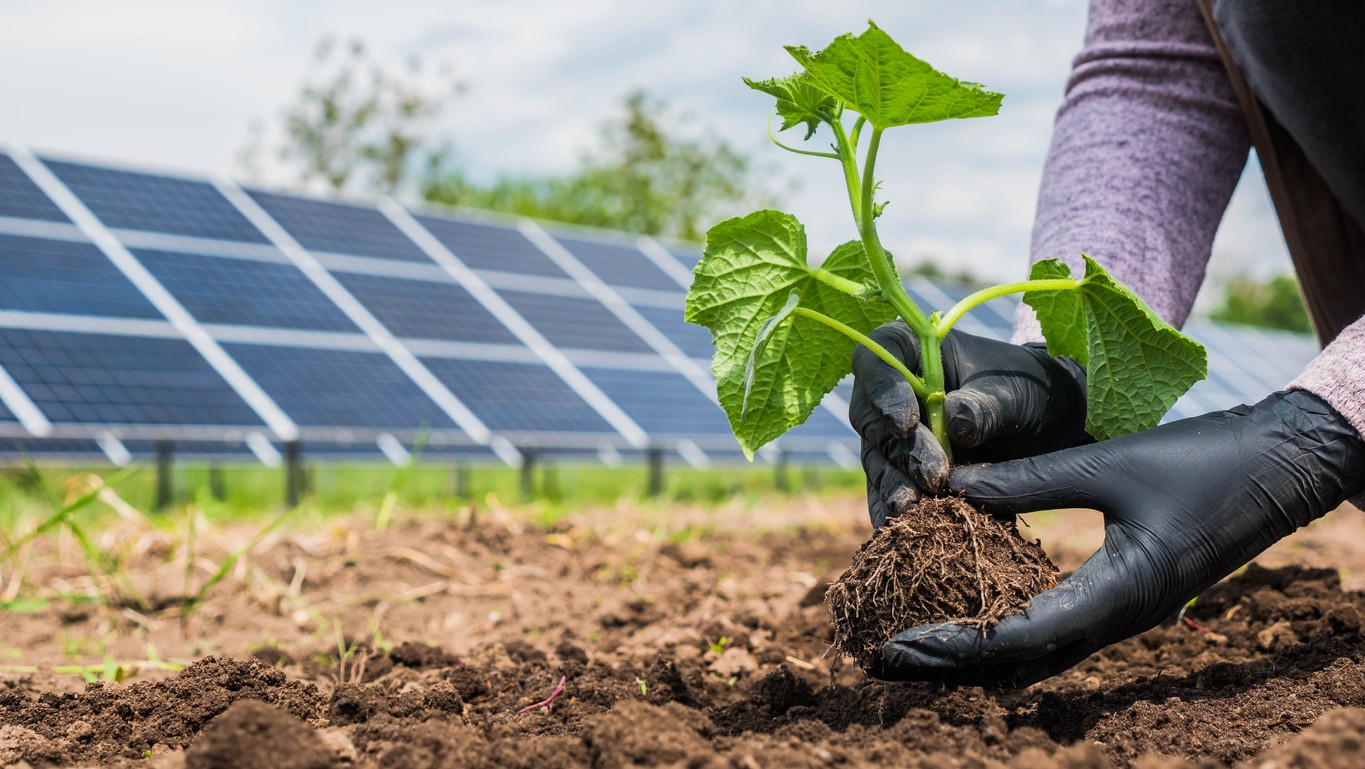
Solar energy has been a renewable energy source for many years to generate clean energy and lower electricity costs. Even though solar panels have been around since 1883, making them more effective, clean, and recyclable is still a work in progress.
There are a few considerations to make when picking your solar panels if you intend to put one on your farm or rooftop. Solar energy is being used to generate power, but the environmental effects of building and operating solar farms have not yet been well investigated.
It is essential to level the soil and remove partial vegetation during the development of solar farm. The time we live in is an agricultural age, and if you think solar farms would affect your soil, the answer is they won’t, and you don’t need to worry about that.
Solar panels are mostly made of silicon, the most abundant earth element. It plays a crucial role in the growth of plants and vegetation.
The metals secure the system to the ground and the frames that join the panels together. These frames are mainly made of aluminum and are completely secure. Aluminum is a corrosion resistance element and is very durable, and it is even more corrosion-resistant when anodized.
A solar system releases very little aluminum into the soil, and studies have proven that it has no harmful effects on the planet and it is safe to place solar panels near crops.
What Can You Grow Under Solar Panels?
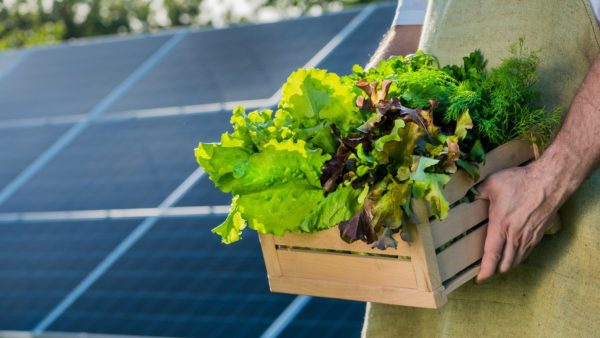
You can plant a range of plants on your land underneath the solar panels, and it would significantly impact your vegetation, depending on the height of the ground mounts your place.
Solar panels don’t dry up or heat anything beneath or around the array, which is good news for crops. The solar panels keep conditions more hospitable for certain plants and extend the growth seasons by keeping them cooler during the day and warmer at night.
The growth rate remained unaffected, and studies have revealed that the overall temperatures are roughly equivalent to what they would be in full sunlight.
One study discovered that 20% of the crops grew better than those grown in full sun when put under magenta panels. Additionally, they used less water and provided access to beneficial shade-resistant plantations like saffron, which they might not have otherwise been able to produce.
If you want to plant something, you should go for native plants and plants that promote pollination, as they would be the best choice for the vegetation underneath the panels. These will offer a home to butterflies and bees, which will help in pollinating your crops.
75% of the crops consumed by people worldwide are pollinated partly by insects, yet they are disappearing swiftly due to anthropogenic pressures and habitat loss. But by growing local plants, like wildflowers, prairie grass, or berries, you’ll help protect the world’s dwindling pollinator population and perhaps even improve the agricultural yields of nearby fields by increasing pollination.
Relationship Between Soil Health and Solar Panels

Scientists have found that areas usually used for agriculture share many of the same characteristics as the ideal locations for massive solar array construction. Solar panels can help your land manage remote properties where regular electric lines are difficult while supplying clean, economical electricity.
For many landowners, increasing solar production can diversify their sources of income and lower their overall operating expenses. Additionally, solar panels serve various functions, including running machinery and well pumps.
Solar panels also help reduce worries regarding crops’ irrigation during power outages. You might be worried about how solar panels affect your land; we will discuss this with the most recent research below.
<h2>Effects of Construction of Large Arrays on Soil Health</h2>
Farmers can use a handbook the US Department of Energy provides to make well-informed decisions on solar panels. Their analysis suggests that adding solar panels might have some effects. Evidence shows that soil health is not significantly impacted by trace levels of chemicals used in photovoltaic panels.
Additionally, soil covered by panels was up to 10 degrees colder than uncovered soil, resulting in reduced CO2 levels. This is good for soil health, given the rising temperatures in various agricultural and residential locations.
Effect of Solar Panels on Water Distribution
Soil health and PV arrays have been the subject of extensive investigation. Numerous studies have shown that soil beneath ground-mounted panels retains more moisture than nearby soil.
Additionally, the growing plants generate a cooling effect that makes solar panels work more effectively. Crop yields can be increased while reducing water use and increasing energy independence due to the impact of solar panels on soil moisture.
The runoff redirection from panel surfaces is another thing you should consider. You can also use rainwater for irrigation if you make a proper route for water; it will reduce the demands on the solar agriculture farm.
Integrating Grazing With Solar Panels for Better Soil Health
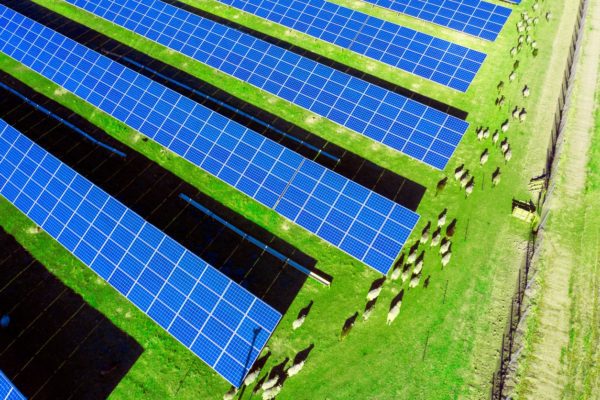
Researchers have looked into grazing small livestock on land under solar panels. Mainly sheep prosper in these circumstances. Pollinator-friendly flora beneath panel arrays enhances soil quality and contributes to higher crop yields.
An analysis of solar sites has found that the soil under PV panels has higher amounts of carbon and nitrogen without compaction, which is beneficial for the soil and plantation of that land.
Benefits of Solar Panels on Soil and Crops
The locations with solar panels offer significant agricultural advantages in stormwater, crop pollination, and soil just by utilizing the proper seed mixture. Furthermore, in contrast with monocrop turf grasses, which are typical on solar sites in some parts of the regions, it is anticipated that a mix of prairie plants will offer improved hydrologic performance.
Native forbs and grass on the land where solar panels are mounted benefit the soil. These native plants restore the soil with organic matter and provide superior stormwater management. This allows soil fauna and microbes to recover after years of severe compaction, fertilizer application, and pesticide use.
Additionally, when native plants eventually eliminate weeds, they’ll maintain the ground cover with just one yearly mowing, which lowers operating expenses. According to research, nearby semi-natural habitats are positively connected with the quantity and variety of pollinating species that come near the plantation.
According to a department in Minnesota, 1/3 of food production, animal fodder, and the majority of wild plants that produce seeds require pollinators to preserve their habitat on agricultural lands. It can be possible due to mounting solar panels on that land.
Landowners and other agricultural industry stakeholders have become aware of solar panels’ advantages and use them to diversify their revenue streams and lower their energy costs.
Impacts of Solar Panels on Animals
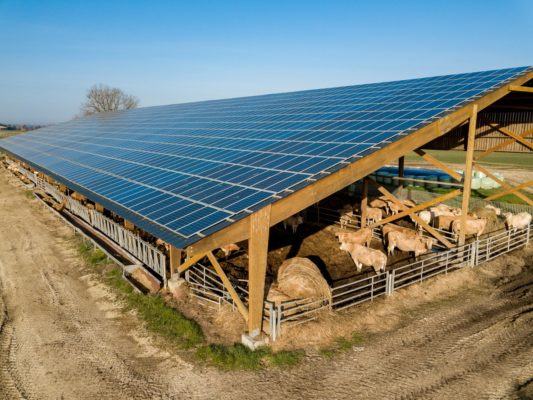
You might be asking whether it’s okay for domesticated animals to approach or go underneath the ground-mounted solar system if you grow cattle or poultry on that land.
Although it is safe for animals to graze close to the solar panels, if cables are chewed, there is a risk of damage. Larger animals like cattle might jump on the panels and damage the system.
Sheep and poultry are excellent choices for animals to graze close to the panels because they are calmer and smaller. Although the typical ground mount has a two-foot clearance, and it may not be sufficient for animals to be underneath the panels. If necessary, you could raise the system to a four-foot clearance, allowing space for sheep to graze and maintain the vegetation underneath the panels.
In addition to its environmental impact, solar energy offers extra benefits to lands, whether through the growth of crops, increased pollination, or a shaded area for your farm animals to graze.
Overall Benefits of Solar Farms
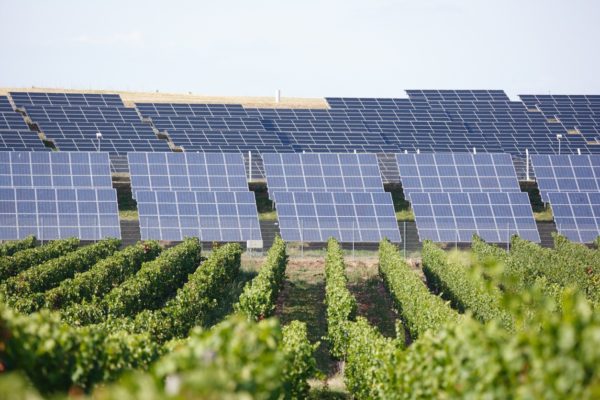
Solar energy technology has made tremendous strides in recent years. Solar energy is the most economical and environmentally friendly energy source available today. Just a few of the advantages of solar farms are listed below:
- Solar power plants don’t pollute the environment. While some emissions are involved in building a solar farm, they are minimal compared to the majority of conventional energy sources.
- Solar farms use a dependable and clean energy source. The sun will continue to exist for the foreseeable future. You cannot say the same about other energy sources like fossil fuels and coal.
- There is a potential for solar farms across the globe.
- Solar energy is for everyone, and if you have considered switching to solar for commercial use, it is a great idea. Solar farms can supply a whole neighborhood or even an entire city with sustainable energy.
Commercial Solar Services from Coldwell Solar
Solar farms not only improve the quality of soil, but also contribute to higher crop yields. Studies have found that the soil beneath the PV panels contained more nitrogen and carbon without being compacted than in equivalent, non-grazing locations.
If you want to go solar and produce clean and green energy, contact Coldwell Solar to learn more about our commercial solar services.

